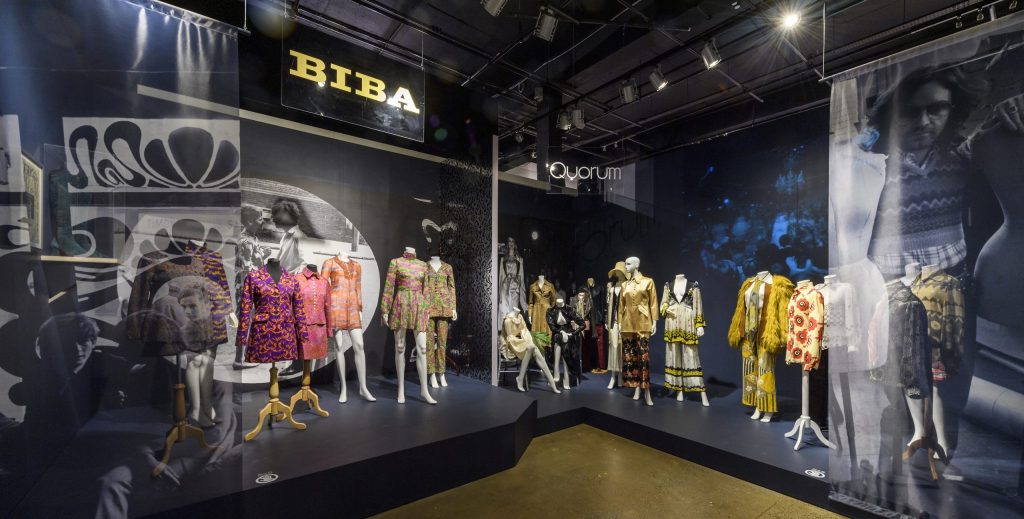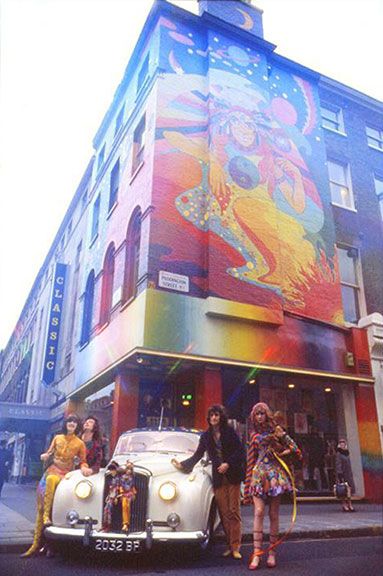Individuality was the rule of the day at the mid-1960s Chelsea boutiques. New ideas, freedom of expression, and opposition to establishment ideals were inspired by changing attitudes on gender and sexuality, which were framed by the socio-political climate of the period. A generation of radical young designers arose as a result of this creative exploration, catering to an exclusive group of artists, aristocrats, and musicians.
“We were young, rich and beautiful, and the tide – we thought – was turning in our favour. We were going to change everything, of course, but mostly we were going to change the rules.” – Marianne Faithfull.

Beautiful People: The Boutique in the 1960s Counterculture is an exhibition currently being held at London’s Fashion and Textiles Museum exploring amazing and rare examples from these era-defining stores. The exhibition is on a particular period in the later 1960s, as well as the thriving boutiques of London. There are exhibits showcasing the designs offered in shops such as Biba, the Beatles’ short-lived Apple boutique, Granny Takes A Trip, Hung on You, and Mr Fish, where Mick Jagger discovered the dress he wore for a 1969 concert in Hyde Park. Musicians are a particular theme of the exhibition as there are pieces worn by Mick Jagger, Keith Richards, and Jimi Hendrix. You step right into the dazzling, star-studded world of London’s 1960s counterculture and immerse yourself in one of Britain’s most dramatic moments in design history.
The Beatles had even tried their hand at retail in 1967, with the Apple Boutique on Baker Street and the short-lived Apple Tailoring on the King’s Road in Chelsea. The former wore high-end attire made of opulent materials by an enigmatic Dutch design team known as The Fool.

By their very nature, many of the boutiques featured in the Beautiful People exhibition were exclusive and only for a select few. Many boutique owners had aristocratic backgrounds and frequently socialised with rock stars. Profit was unimportant; running a business was seen as an extension of their social lives and a creative outlet. For example, aristocrat Michael Rainey and his wife Jane Ormsby-Gore launched Hung on You in 1965, while Granny Takes a Trip featured the Oscar Wilde statement “One should either be a work of art or wear a piece of art” over its entrance. Due to the high cost of lavish materials and tailoring, as well as their amateurish approach to business, many of these stores had short lives. Biba, on the other hand, made an impression because its garments were wearable and inexpensive for a new generation of young women with disposable cash – a concept that still resonates today.
By the late 1960s, Michael Rainey and Jane Ormsby-Gore had left London, and a new creative pair had arrived in town, eager to cause havoc. Malcolm McLauren and Vivienne Westwood looked to rock ‘n’ roll for inspiration, viewing it as a way to voice their dissatisfaction with the post-hippie era and then, punk was born.
SEE MORE:STELLA MCCARTNEY LAUNCHES CAPSULE COLLECTION CELEBRATING THE BEATLES


